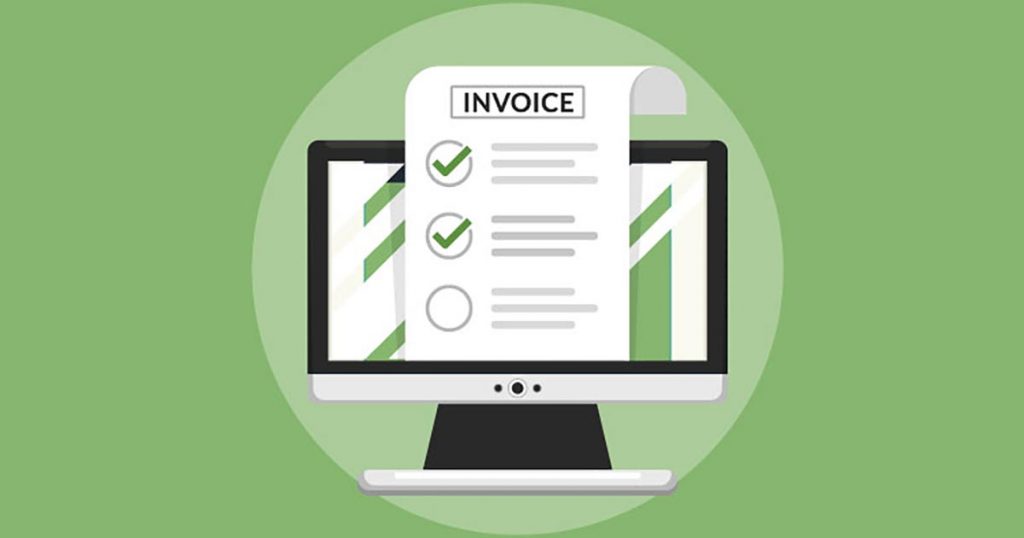
The scheme of E-invoice was officially approved by the GST Council in the 37th Council Meeting. If you are looking to generate an e-invoice under GST, this is the step-by-step guide to help you.
What is GST E-invoice?
E-invoice is not an invoice that you can download or generate through the GST Portal, but it is a process of validating all the B2B invoices electronically by the GST Network (GSTN). It’s not feasible to generate e-invoices directly from the common portal.
E-invoicing or authentication is required to ensure that the invoices generated by your accounting software are valid to be used for processes like e-way bill creation and GST return filing. The process involves the submission of business invoices created by different accounting software to the GST Portal in order to get them verified in a common manner.
Since the invoices are created by different GST return filing software and may have different formats, they cannot be all fetched directly to the GST system by the software. So, the government decided to introduce a standard format (Schema), which requires all the accounting software to follow a common format which can then be uploaded to the GST portal for authentication and validation.
Need Demo of GST e-invoice Generation Software
To sum up, an E-invoice is a standard mechanism or schema for data exchange between different GST billing software of different manufacturers.
How is the GST E-invoicing System Beneficial?
- Reporting and authentication of B2B invoices from the common portal will ensure that GSTR-1 for B2B supplies are auto-prepared in the new format.
- E-invoicing can be further used for creating e-way bills by providing only vehicle details.
- Invoices uploaded by suppliers for authentication will be automatically shared with buyers for reconciliation.
- The system will auto-match input credit liability with output tax. E-invoices can be created for Debit/Credit Notes, Invoices, and other eligible documents.
- E-invoices can be created for Debit/Credit Notes, Invoices, and other eligible documents.
Introduction of IRP on GST E-invoicing
‘e-Invoicing’ or ‘electronic invoicing’ is all set to be implemented mandatory from 1st October 2020 for B2B and B2G transactions for big and medium-sized taxpayers. National Information Centre has provided the e-invoice registration facilities in the Invoice Registration Portal (IRP) via API mode along with other modes. These APIs enable taxpayers & GSPs to combine their business systems & procedures with the e-invoice mechanism for the easy and glitch-free registration and generation of the invoices on their systems.
Invoice Registration Portal (IRP) also facilitates the developers or taxpayer’s system integrator to understand the integration of the e-Invoicing system with their business processes and allows user’s registration to access the APIs. IRP facilitates API documentation by providing all the information such as URLs,/calling methods, JSON Schema of the request payloads, sample request payloads & sample responses, validations being applied and akin details which an application developer needs to integrate the systems.
IRN portal also helps the developers to simulate the end-to-end use of APIs. This includes the comprehension of the generation of request payloads, the encryption and decryption of the requests & responses and the evaluation of the accuracy of encryption.

Let’s Check GST E-invoice Generating Procedure
The taxpayer or business is responsible for generating the invoice/s and then submitting them to the Invoice Registration Portal (IRP) for approval. After successful verification, the portal will return the invoice to the supplier along with a unique reference number, digital signature, and a QR code. The e-invoice will also be shared with the corresponding buyer on the email ID provided.
Step 1: Invoice Creation
The seller/supplier will create an invoice in the prescribed format (e-invoice schema) using his/her accounting or billing software. It must have the mandatory details.
The accounting software of the supplier will generate a JSON for each B2B invoice. The JSON file will be uploaded to the IRP.
Step 2: IRN Generation
The next step would be to generate a unique Invoice Reference Number (IRN) by the seller using a standard hash-generation algorithm.
Step 3: Invoice Uploading
Now, the seller will upload JSON for each of the invoices, along with IRN, to the Invoice Registration Portal, either directly or through third-party software.
Step 4: Authentication and Signing
IRP will validate the hash/IRN attached with JSON or generate an IRN if not already uploaded by the supplier.
Then, it will authenticate the file against the central registry of GST.
Upon successful verification, it will add its signature on the invoice and a QR code to JSON.
Hash generated earlier will become the new IRN of the E-invoice. It will be the unique identity of that e-invoice for the entire financial year.
Step 5: Sharing of Data
The uploaded data will be shared with the E-way bill and GST system.
Step 6: E-invoice Downloading
The portal will send the digitally-signed JSON along with the IRN and QR code back to the seller. The invoice will also be sent to the buyer on their registered email id.










Do we need to create eInvoice for B2B customers who are Composition taxpayer?
Yes
We would be starting e-invoicing from 01-Apr-2022 onwards.
Kindly provide clarification on the following.
1. Can we dispatch the materials under normal invoice & e-waybill, without generating IRN?
2. If yes, then how much time would we have to generate IRN and download e-Invoice ?
Thanks in advance
Amit
Yes, better to generate IRN within 24hrs of generating invoice
I have downloaded GSTR1 B2B json file ( More than 500 e invoices) and I have modified the data and created json file. After successful uploading json file data (4 days over) not showing in GSTR1 B2B. how to raise the query with GST dept.
Please raise complaint ticket on GST portal for the same
we have generated E invoice on today. but this not reflected in GSTR1 on today. but today we need to file gstr1. any option available in file IRN in GSTR1 manually
Sir, you can click on generate summary button & wait for an hour at least, sometime there may be a server issue at the portal site to fetch the details
GST bill
I created an Excel file from my billing software then copied it on the tool provided by einvocie portal, from their i validate the records and then generate JSON file which is uploaded on einvoice portal.
eInvoice portal generated IRN No., Ack No. and i downloaded excel,json,pdf file of the same einvoice portal but I am unable to see it on GSTR1 poral for lat 7 days
Please guide me what to mistake I made or what action to be taken from my side
Normally portal takes 24hr to reflect the E-invoice data into GSTR-1, hence you should raise a complaint against the same on the GST portal
You said u have an excel from your billing software and you copy it in the downloded excel and convert it into json. Cant we prepare our own json directly from the billing software and upload it.
Yes you can do the same via our E-invoice software
E invoice facility in only for B2b invoice, we cant generate e-invoice in cash sales or B2C sales
No for B2C QR code apply
How to generate an e-invoice for the new GST Registration of the party? can we provide a manual bill for the same? it’s valid or not?
can we provide a manual bill for party GST no. is shown suo moto canceled?
an e-invoice can be generated through E-Invoice portal, it is applicable for taxpayers whose T/O is >100crores
sir, I just want to know that how to generate a cash bill in e-invoice?
whether it is necessary to generate e-invoice for all the bill?
Currently, E-invoice is available only for transaction related to B2B, SEZ WPAY, SEZ WOPAY, EXPORT WPAY, EXPORT WOPAY & DEEMD EXPORT
Are any clarifications received from Gov. about the printing of the Invoice? Is the invoice require to have IRN, QRCode, Akg No, Akg date on the invoice. is it require to keep a record of SignedInvoice with Invoice?
Sir there is no such clarification received from portal regarding this
I have a query related to goods sent on approval to customer. is it mandatory to make E-INVOICE & if YES then is it possible to generate E-INVOICE without Value?
E-invoice can not be generated without value
I have uploaded the JSON file and downloaded an archive file. It was extracted. How I can open the file and print
Just double click on the extracted file
Did I see the E-invoice issued by my supplier?
No
How to read the data through the scanner as the data in QR code is decrypted.
Don’t Know
how to encrypt data
API browser url for developer
Don’t Know
Can the seller generate the invoice and generate the QR code (with the mandatory data) and upload it for registration?
Yes
What is the procedure of making E-invoicing through JSON file?
JSON file has to imported on E-invoice portal after that IRN no. generated.
Is there a way I can download the list of e-invoicing enabled vendors from the GST portal instead of searching one by one?
No such list available on portal uptill now
Hi, I have a QR code of the Seller Invoice, how do I retrieve all the information related to this Invoice?
You can retrieve the information with the help of a QR code reader.
How to create E-Invoice with IRN? any free software in GST portal for E-Invoice
Sir, you can create E-invoice directly from your ERP software, the only requirement is to have valid Login ID on e-invoice portal which is currently available only for taxpayers whose Turnover is greater than 100 crores
I have a doubt whether IRN and QR code is required to print in tax invoice?
If yes, how to print QR code in the invoice?
Whether it can be done by Accounting/Billing Software
IRN will be generated through Invoice return portal (IRP) only not by accounting/billing software
My doubt is Whether IRN and QR code is required to print on a tax invoice?
Yes, it is mandatory to print IRN on tax invoice if your turnover is more than 500 Crores with effect from 1st April 2020
Confused with your response.
Your steps say Seller can generate and you now say need the IRP to generate it..
we understand that IRN needs to be validated for format/content etc.
Step 2: IRN Generation
The next step would be to generate a unique Invoice Reference Number (IRN) by the seller using a standard hash-generation algorithm.
nice content